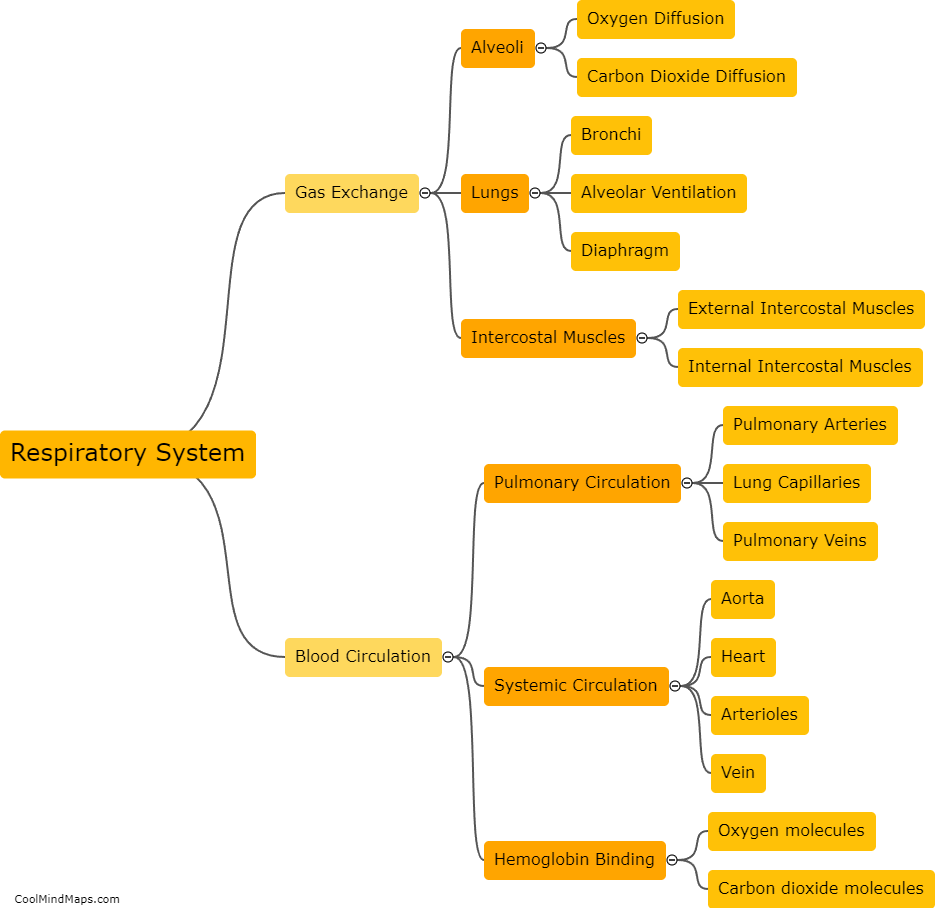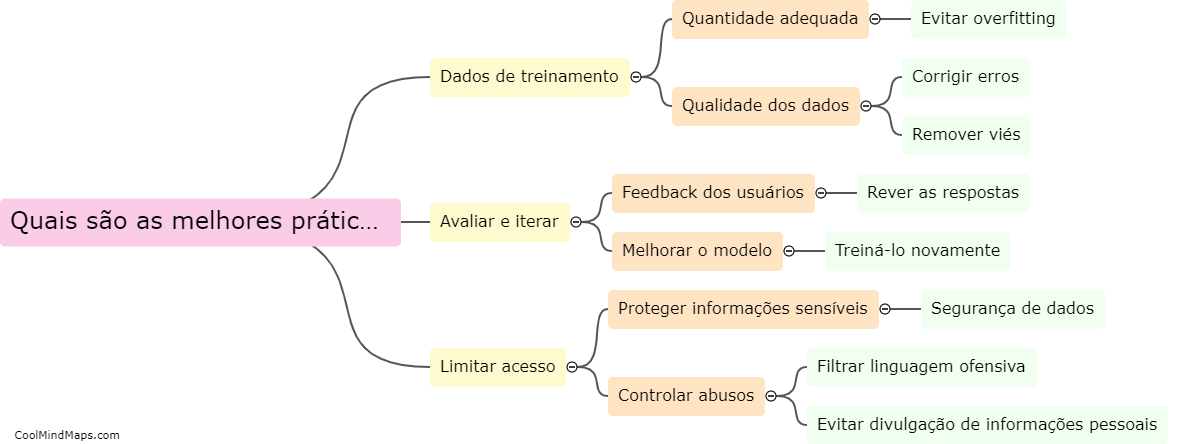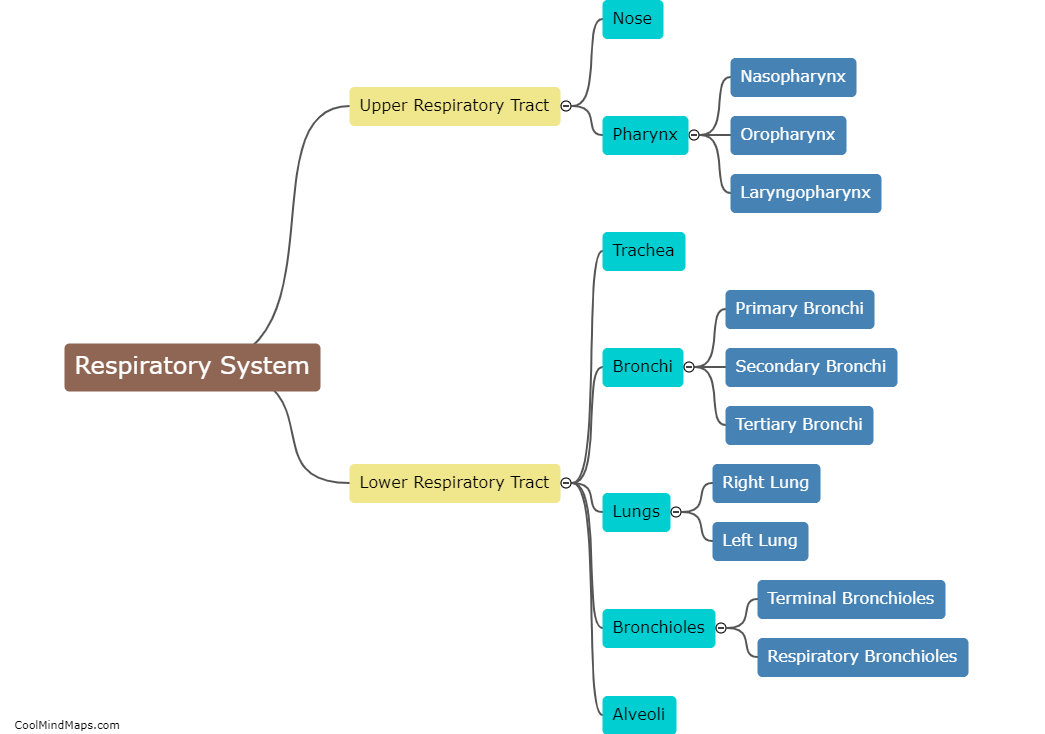How does the respiratory system help in gas exchange?
The respiratory system plays a crucial role in gas exchange, which is the process by which oxygen is taken in and carbon dioxide is released from the body. It consists of organs such as the lungs, bronchi, trachea, and diaphragm. The process starts with inhalation, where the diaphragm contracts and the volume of the chest cavity expands, causing air to be drawn into the lungs. The trachea and bronchi carry this air to the alveoli, which are tiny air sacs in the lungs. Within the alveoli, oxygen diffuses across the thin walls into the bloodstream and binds to red blood cells. At the same time, carbon dioxide, a waste product, is released from the bloodstream and diffuses into the alveoli to be exhaled. This exchange of gases between the lungs and the blood allows oxygen to enter the body and be delivered to tissues, while carbon dioxide is eliminated, ensuring the body's proper functioning.

This mind map was published on 27 November 2023 and has been viewed 82 times.











